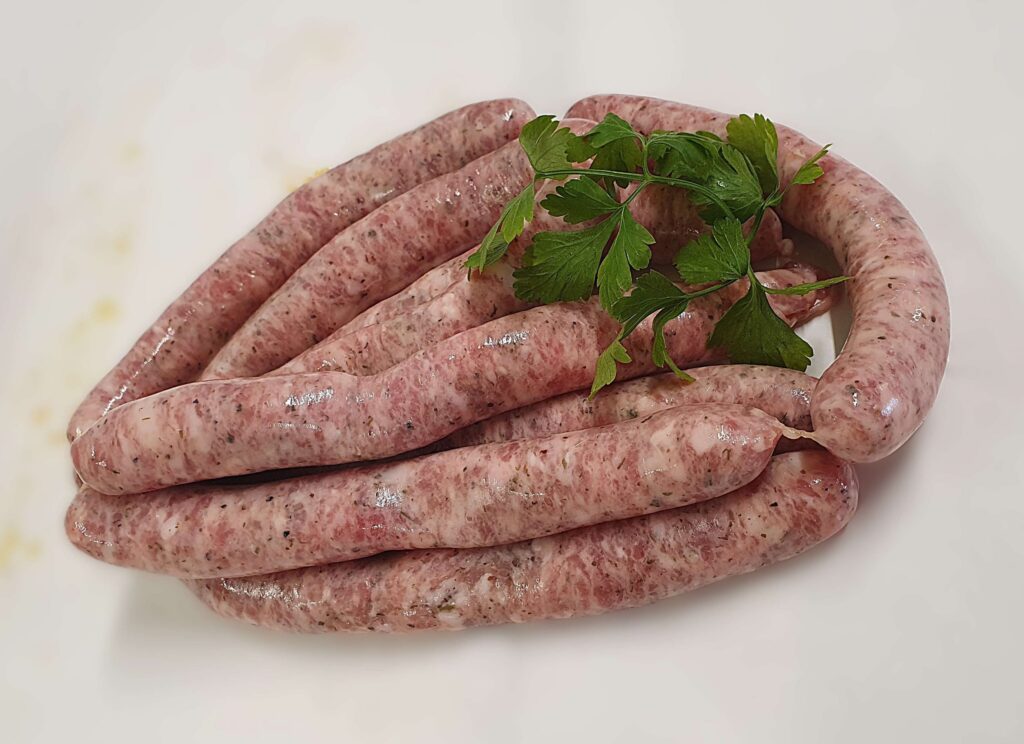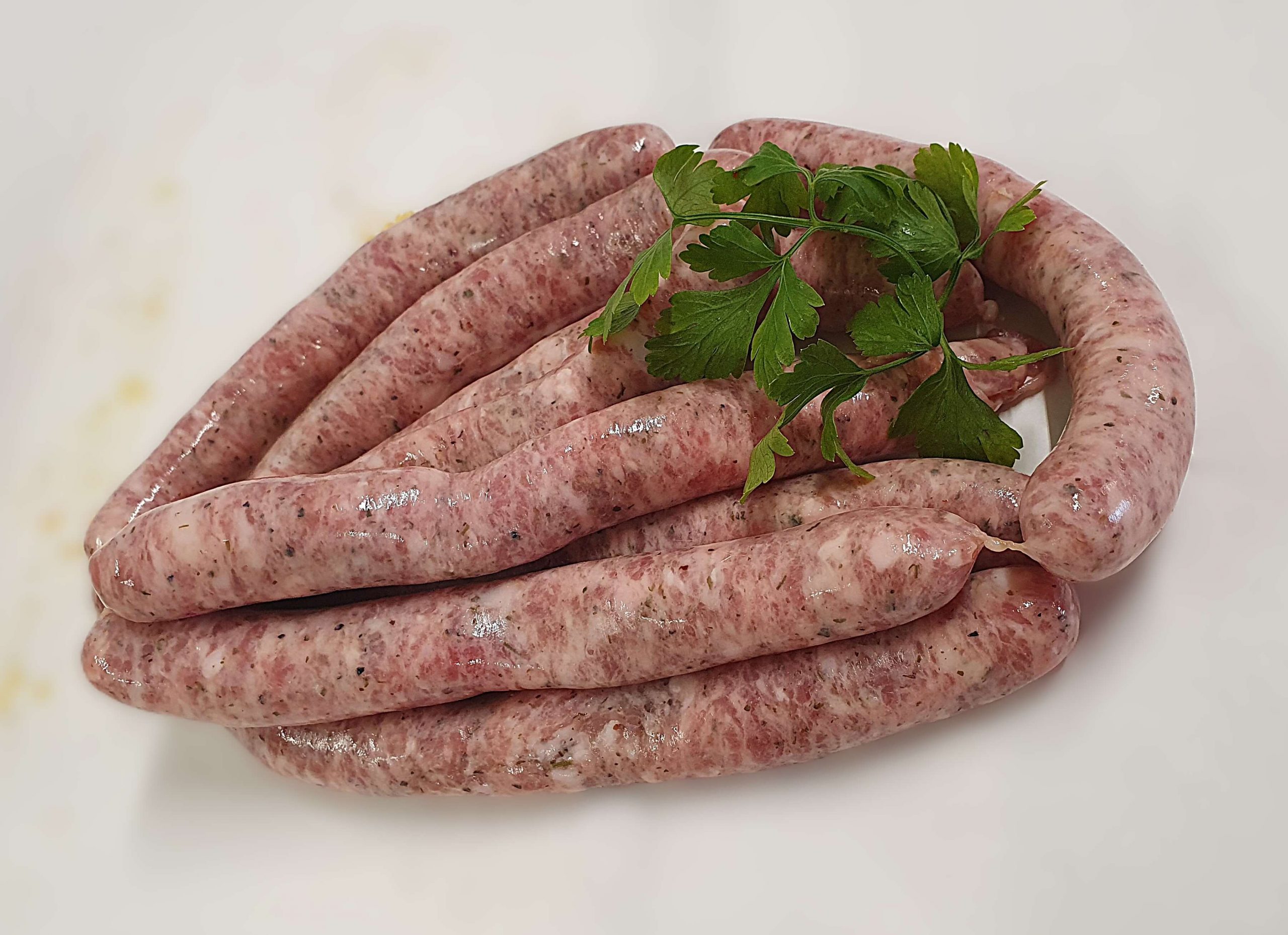
Chipolatas: A Deep Dive into These Delicious Little Sausages
Chipolatas, those slender and flavorful sausages, have carved a niche for themselves in the culinary world. Often smaller than their larger sausage cousins, chipolatas pack a punch in terms of taste and versatility. Whether grilled at a barbecue, pan-fried for breakfast, or baked into a comforting casserole, chipolatas offer a delightful eating experience. This article will delve into the history, preparation, culinary uses, and nutritional aspects of these beloved little sausages, providing a comprehensive understanding of what makes chipolatas so special.
What Exactly Are Chipolatas?
Chipolatas are fresh sausages, typically made from coarsely ground pork, although lamb or beef can also be used. Their defining characteristic is their small size; they are usually thinner and shorter than standard sausages. The meat is seasoned with a blend of herbs and spices, which can vary depending on the region and the specific recipe. Common seasonings include salt, pepper, thyme, sage, and nutmeg. The mixture is then stuffed into natural casings, traditionally made from sheep intestines.
The word “chipolata” is believed to be derived from the Italian word “cipollata,” meaning “made with onions.” While some modern chipolata recipes may include onions, this is not a universal ingredient. The name may also refer to a type of Italian stew that features small sausages.
A Brief History of Chipolatas
The exact origins of chipolatas are somewhat murky, but they are believed to have originated in France. Sausages, in general, have a long and rich history, dating back to ancient civilizations. The process of preserving meat by grinding it, seasoning it, and stuffing it into casings has been practiced for centuries. Chipolatas, as a distinct type of sausage, likely emerged as a variation on these traditional methods, offering a smaller and more delicate alternative to larger sausages.
Over time, chipolatas spread throughout Europe and beyond, adapting to local tastes and ingredients. Today, they are enjoyed in numerous countries, each with its own unique variations and culinary traditions. In the United Kingdom, for example, chipolatas are a popular component of the traditional Christmas dinner, often wrapped in bacon to create “pigs in blankets.” [See also: Christmas Dinner Recipes]
Making Chipolatas at Home
While chipolatas are readily available in most supermarkets and butcher shops, making them at home can be a rewarding experience. It allows you to control the ingredients, customize the flavor profile, and enjoy the satisfaction of creating something delicious from scratch. Here’s a basic overview of the process:
- Prepare the Meat: Grind the pork (or other meat of your choice) to a coarse consistency.
- Season the Meat: Combine the ground meat with your desired herbs and spices. Common choices include salt, pepper, thyme, sage, nutmeg, and garlic.
- Stuff the Casings: Carefully stuff the seasoned meat mixture into natural sausage casings. This can be done using a sausage stuffer or, with a bit of practice, by hand.
- Twist and Link: Twist the filled casings to create individual chipolatas of the desired length.
- Refrigerate or Freeze: Store the chipolatas in the refrigerator for up to a few days or freeze them for longer storage.
Making your own chipolatas allows for experimentation with different flavor combinations. Consider adding ingredients such as chili flakes for a spicy kick, apple for a touch of sweetness, or different herbs and spices to create your own signature blend. [See also: Homemade Sausage Recipes]
Culinary Uses of Chipolatas
The versatility of chipolatas makes them a welcome addition to a wide range of dishes. Their small size and quick cooking time make them ideal for both casual meals and more elaborate culinary creations. Here are just a few of the many ways to enjoy chipolatas:
- Grilled or Pan-Fried: Simply grill or pan-fry chipolatas until they are cooked through and browned on all sides. Serve them with your favorite sides, such as mashed potatoes, vegetables, or a fresh salad.
- In Casseroles: Add chipolatas to casseroles for a boost of flavor and protein. They pair well with vegetables, pasta, and creamy sauces.
- With Breakfast: Include chipolatas as part of a traditional breakfast spread. They are a delicious accompaniment to eggs, toast, and bacon.
- In Skewers: Thread chipolatas onto skewers with vegetables and other meats for a flavorful and colorful grilling option.
- As Pizza Toppings: Slice chipolatas and use them as a topping for homemade or store-bought pizzas.
- Pigs in Blankets: Wrap chipolatas in bacon and bake them until the bacon is crispy. This classic combination is a crowd-pleaser, especially during the holidays.
Whether you’re looking for a quick and easy weeknight meal or a special dish to impress your guests, chipolatas are a versatile and flavorful ingredient that can elevate any culinary creation. [See also: Sausage Recipes for Dinner]
Nutritional Information
Like all sausages, chipolatas are a source of protein and fat. The specific nutritional content can vary depending on the ingredients used and the size of the sausage. Generally, chipolatas contain a moderate amount of protein, which is essential for building and repairing tissues. They also contain fat, which provides energy and helps the body absorb certain vitamins. However, it’s important to consume chipolatas in moderation as part of a balanced diet, as they can be high in saturated fat and sodium.
When choosing chipolatas, opt for varieties made with lean meat and lower sodium content. You can also look for chipolatas that are made with natural ingredients and without artificial preservatives or additives. Reading the nutrition label can help you make informed choices about the chipolatas you consume.
Conclusion
Chipolatas are a delightful and versatile type of sausage that has earned its place in kitchens around the world. From their humble beginnings to their modern-day popularity, chipolatas continue to be enjoyed for their flavor, convenience, and adaptability. Whether you’re a seasoned cook or a novice in the kitchen, chipolatas offer a delicious and satisfying culinary experience. So, the next time you’re looking for a flavorful and easy-to-prepare meal, consider reaching for a pack of chipolatas and exploring the many culinary possibilities they offer.

